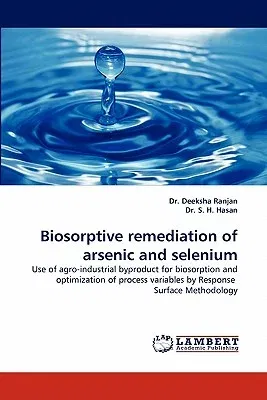Deeksha Ranjan
(Author)Biosorptive Remediation of Arsenic and SeleniumPaperback, 1 June 2011

Qty
1
Turbo
Ships in 2 - 3 days
Only 2 left
Free Delivery
Cash on Delivery
15 Days
Free Returns
Secure Checkout
Print Length
272 pages
Language
English
Publisher
LAP Lambert Academic Publishing
Date Published
1 Jun 2011
ISBN-10
3844331999
ISBN-13
9783844331998
Description
Product Details
Authors:
Book Format:
Paperback
Country of Origin:
US
Date Published:
1 June 2011
Dimensions:
22.86 x
15.24 x
1.55 cm
ISBN-10:
3844331999
ISBN-13:
9783844331998
Language:
English
Location:
Saarbrucken
Pages:
272
Publisher:
Weight:
403.7 gm

